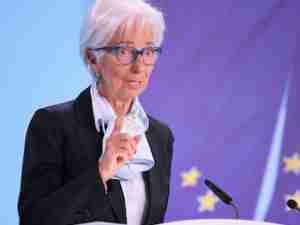Severe material shortages and long delivery times are weighing on demand for German manufactured goods, signaling that the country’s recovery may lose momentum in the final months of the year.
Factory orders plunged by 7.7% in August, exceeding all forecasts in a Bloomberg survey. Supply bottlenecks affected makers of cars and automotive parts in particular—they saw orders fall 12% from the previous month.
The report suggests the recovery in Germany’s manufacturing-heavy economy is likely to face speed bumps for months to come. Rapid rebounds from coronavirus lockdowns across the world have led to a shortage of inputs as well as delivery delays.
“If this translates to larger-than-expected drops in industrial production as well, forecasts for growth in the third quarter and for 2021 overall will come down,” said Claus Vistesen, chief euro-area economist at Pantheon Macroeconomics.
German output numbers for August are due to be published on Thursday and were expected to show just a small monthly dip prior to Wednesday’s report on orders.
Some major economic think tanks have already started revising lower their growth projections, with the Ifo and DIW institutes both forecasting that the recovery will be pushed into 2022.
Companies are echoing that prediction. Daimler AG has said they expect bottlenecks to persist into next year, and Volkswagen AG’s main plant in Wolfsburg might face historically low output in 2021.
A gauge of business confidence continued to deteriorate in September amid the combined forces of emerging coronavirus variants, supply squeezes and a lack of shipping capacity.
Inflation in the country is at the highest rate in nearly three decades, a report showed last week. So far, policy makers have insisted that the spike is largely transitory, but have recently warned of the risk of more persistent price pressures.
The economy ministry said weakness in demand in August might partially reflect strong bulk orders during previous months and company holidays.
Foreign demand dropped 9.5%, driven by a slump outside the euro zone. Domestic orders fell 5.2%. On the year, orders were still up nearly 12%.



